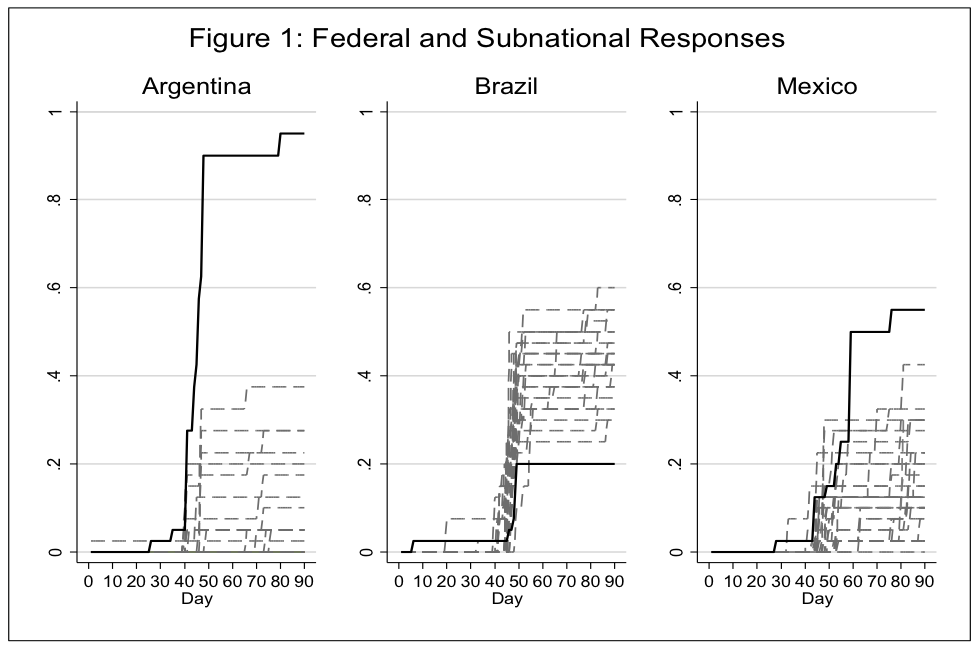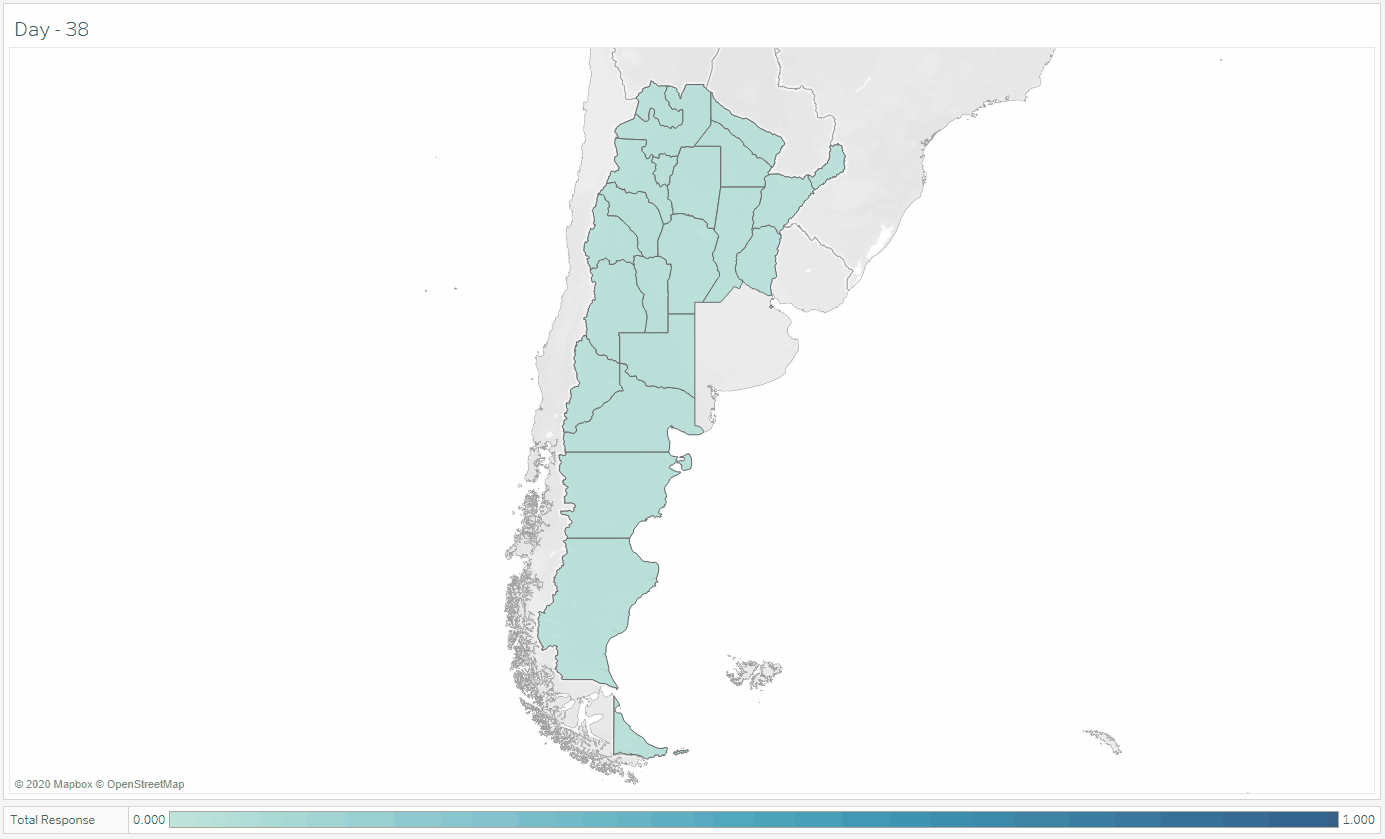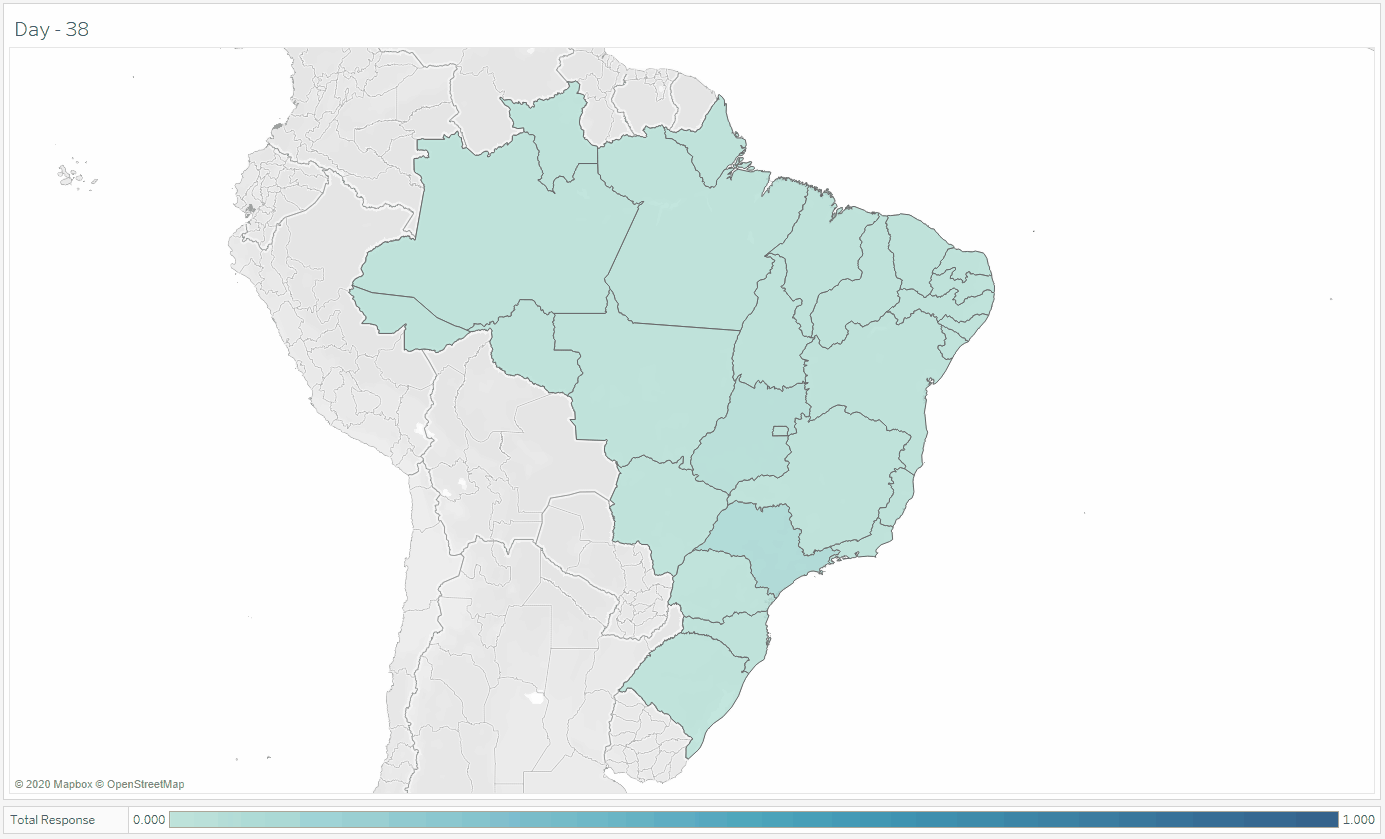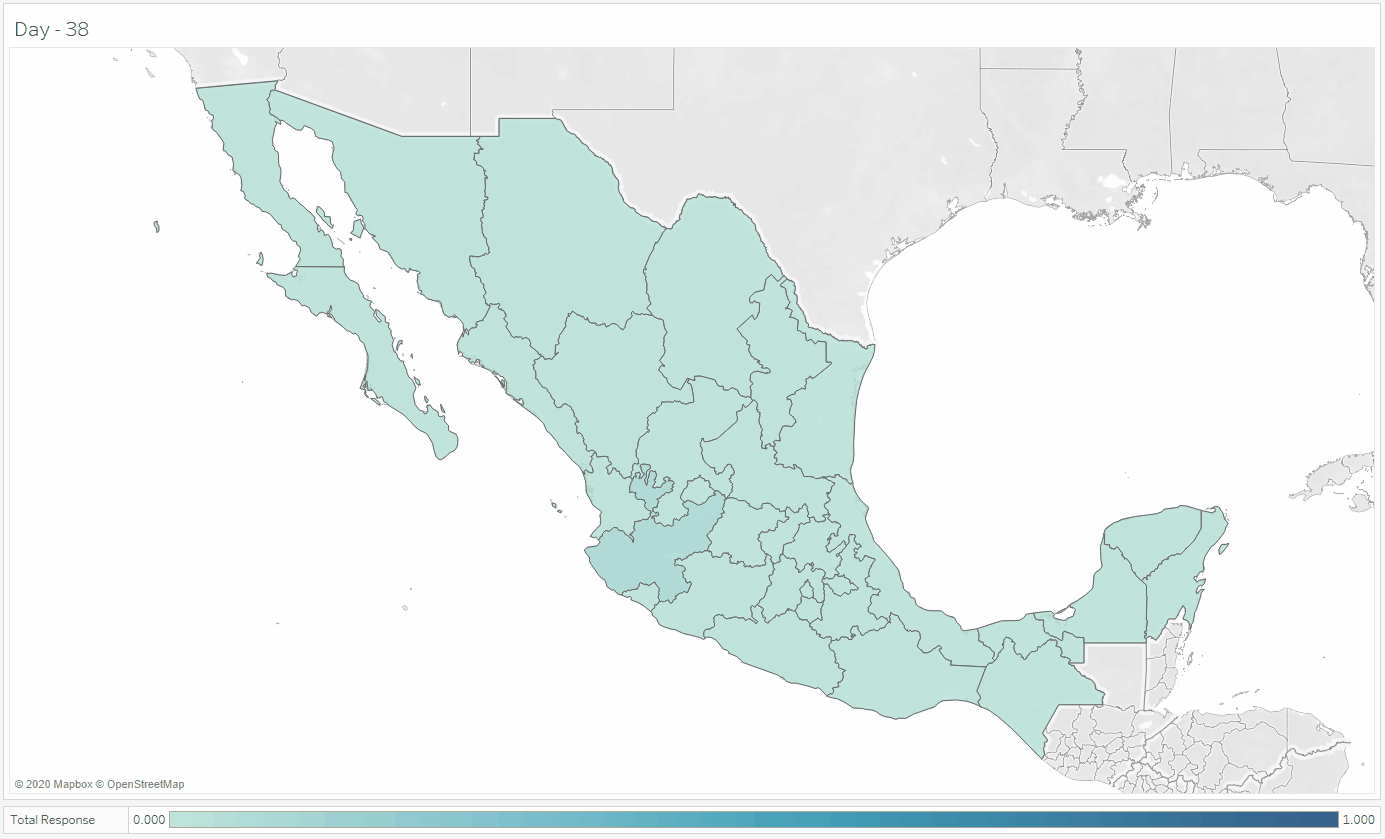This is a guest post from Julie VanDusky-Allen, Olga Shvestova, and Andrei Zhirnov. Julie VanDusky-Allen is an assistant professor at Boise State University. Her research focuses on both formal and informal institutions, legislative organization, political parties, political participation, and support for and satisfaction with democracy. Olga Shvestova is Professor of Political Science and Economics at Binghamton University (SUNY). Professor Shvetsova’s research focuses on determinants of political strategy in the political process. Broadly stated, these include political institutions that define the “rule of the game” and societal characteristics that shape goals and opportunities of the participant players. Andrei Zhirnov is Associate Lecturer in Quantitative Methods in Social Science at the University of Exeter. He received his PhD in Political Science in 2019 from Binghamton University and studies political institutions and electoral systems.
As Latin America has become one of the hot spots for the spread of COVID-19 cases, political leaders are being scrutinized for their responses to the pandemic. While the federal government of Argentina has been praised for its quick and comprehensive response, the Brazilian federal government and the Mexican federal government have been criticized for their lackluster responses.
Yet, to fully understand the COVID-19 policy responses in these countries, we need to look at responses not just at the national level, but also at state level, as Argentina, Brazil, and Mexico are all federal systems.
To compare the governments’ responses to COVID-19 at the national and subnational levels, we use data from the Global COVID-19 Protective Policy Index (PPI) project at Binghamton University, State University of New York. The PPI measures public health government responses to COVID-19 at all levels of government throughout the world.
The PPI measure considers the following categories: state of emergencies, border closures, school closures, social gathering and social distancing limitations, home-bound policies, medical isolation policies, closure/restriction of businesses and services, and mandatory personal protection equipment.
It not only considers policies in each of these categories, it also takes into account the strength of policies in each of these categories, such as partial versus full school closure. The coding for the policies is based on government websites and reputable news sources reporting policy adoption.
The three indices, total, state, and federal, are measured daily for each state daily. Each is normalized and hypothetically ranges from 0 and 1, with higher values indicating a larger response by the government.
Comparing Policy Responses
To compare federal and subnational public health policy responses to COVID-19 during the onset of the pandemic in Argentina, Brazil, and Mexico, we use PPI data from February 1, 2020 to April 30, 2020. We designate April 30 as the end of the pandemic onset phase because the global pandemic response was monotonically non-declining (escalating) during that period.
Figure 1 shows how the federal and subnational PPI values changed during this time in Argentina, Brazil, and Mexico. The solid black lines in Figure 1 denote the federal responses and the dashed grey lines denote the subnational responses.

Across the three nations, there are three different patterns of national-subnational public health policy action.
In Argentina, the federal government took the lead in issuing public health policies. In Brazil, the states took the lead in responding to the virus. Policies issued by the federal government were weaker than those issued by the states. And in Mexico, the states and the federal governments were comparably active in addressing the public health crisis.
While Figure 1 displays the individual responses at the federal and subnational level, it is also important to analyze how the combined federal-subnational responses contributed to the overall response in each country.
To this end, we calculated the total overall government response in each country, weighing each subnational response by its proportion of the national population.
The resulting index tells us the total policy protection of the average resident in each country from February 1 until April 30. We display the results in Figure 2 below.

The total response in Argentina was the strongest throughout most of the 90-day period. Interestingly, public health policies from all sources were stronger in Brazil than in Mexico until the end of March, but then the total response in Mexico outpaced that in Brazil.
While the data in Figures 1-2 tell us the strength of the adopted policies in each country, they do not consider the duration of policies.
To this end, we develop another measure that captures both the strength and duration of policies. The State Level Cumulative PPI is calculated for each subnational unit for each day by summing all PPI values prior to and including that day in that subnational unit.
We display the results in three histograms in Figure 3. The values represent the distribution of the State Level Cumulative PPI for all subnational units in each country from February 1 to April 30.

The histograms suggest that the average State Level Cumulative PPI in provinces in Argentina was higher than in Brazil and Mexico across the entire period.
And while states in Mexico and Brazil had similar State Level Cumulative PPI levels, there was quite a bit more variance in Brazil.
We also developed a Cumulative PPI measure that captures both the strength and duration of overall federal and subnational policies in each country. The Cumulative PPI is calculated for each day by summing all weighted PPI values prior to and including that day. We display the data in Figure 4.

The data suggest that Argentina’s cumulative response strongly outperforms those in Brazil and Mexico. In addition, while Brazil’s overall cumulative response slightly exceeds Mexico’s response from the start of the period, the two track closely together throughout most of the period.
This information, combined with the information from Figures 1-3, suggests that Brazil and Mexico had comparable levels of public health policy protection. But the two nations reached those levels via the policy responses of different types of government.
In Brazil, it was mostly through state policy, and in Mexico, it was through a combination of state and federal policies. We discuss how these three different patterns of federal-subnational responses evolved in each country below.
A Strong Federal Response in Argentina
In Argentina, even prior to the confirmation of the first case on March 3, the federal government acted. In February, the government monitored and isolated travelers from countries with confirmed cases.
After the first confirmed case, a few provinces closed schools, closed their domestic borders, closed down non-essential businesses, and required residents not to leave their homes unless necessary.
As several provinces were also facing another public health crisis, an outbreak of dengue fever, several provincial governments developed policies to address both crises. Though provinces were first to adopt public health measures to combat the virus, the federal government’s policy response quickly outpaced the provincial response.
On March 12, the federal government declared a state of sanitary emergency and began to restrict travel from countries heavily affected by the pandemic. It also shutdown entertainment venues, restaurants, and schools nationwide.
On March 19, the federal government declared a complete lockdown throughout the country. All nonessential businesses were closed. People were not allowed to leave their homes unless necessary. Security officials strictly enforced this lockdown.
Provincial governments quickly began to follow the federal government’s lead in responding to the crisis. Then throughout the end of March and early April, several provincial governments mandated the use of facemasks in public spaces. The federal government adopted this measure in mid-April.
The map in Figure 5 below displays the total COVID-19 response (PPI) at the provincial level, reflecting the strength of public health policies by federal and provincial governments that were in effect from March to April.
The map demonstrates that there was a strong and uniform public health policy response to the pandemic’s onset in Argentina.
Figure 5: Subnational Variation in Argentina

All states had the same PPI by the end of April, as their state policies were exceeded in strength by the policies of the federal government. This was a direct result of the strong federal government’ response to the developing crisis.
The Rise of the Brazilian States
In direct contrast to Argentina, the Brazil federal government took a laxer approach to addressing the virus.
Early in the crisis, President Bolsonaro publicly dismissed the dangers of the pandemic and dubbed it a media fantasy. As such, the federal government did not pass many measures to mitigate its spread.
In early February, the federal government did begin encouraging but did not mandate that individuals who were exposed to the virus or had traveled to the places with the virus would self-isolate.
The first confirmed case in Brazil was on February 25. But it was not until mid-March that the federal government began to adopt stricter policies to mitigate the spread of the virus.
It imposed partial international travel restrictions from countries with a large number of cases. It also declared a state of emergency and allowed individuals from vulnerable populations to work from home.
Note that the federal government did not shut down non-essential businesses. Instead, in the face of states adopting their own measures, the federal government issued a definition of essential businesses in order to limit states’ ability to shutdown businesses.
In early April the Brazilian Supreme Court confirmed the states’ concurrent powers to address the health crisis and ruled that states had the power to determine which businesses stayed open.
Since President Bolsonaro was resistant to adopting policies to mitigate the spread of COVID-19 in Brazil, state governments such as Pernambuco, Goiás, Bahia, and Santa Catarina took the lead in addressing the crisis.
Of note, many states declared a state of emergency before the federal government did. Almost every state shut down schools early in the pandemic. Most states shut down non-essential businesses, bars, restaurants, and entertainment venues. Some also placed strict restrictions on social gatherings. In April, some states adopted the mandatory use of face masks.
In the map in Figure 6 below, we display the total levels of COVID-19 Protective Policies (PPI) in each state in Brazil, taking into account both federal and state policies effective for the states from March to April.
Figure 6: Subnational Variation in Brazil

The data in the map demonstrates that public health policy response to COVID-19 was weaker and less uniform than it was in Argentina. Overall, there was a weaker response to stopping the spread of the virus in Brazil than there was in Argentina.
Combined Federal and State Responses in Mexico
The first COVID-19 case in Mexico was confirmed on February 28. At this point, the federal government began isolating individuals with suspected infections.
In mid-March, the government shut down schools and partially shut down the land border. Towards the end of March, the federal government began placing strict restrictions on social gatherings and allowed vulnerable individuals to stay home from work.
On March 30, a federal state of emergency was declared, which closed non-essential businesses and entertainment venues, and people were asked to not leave their homes unless necessary.
And in mid-April, the government restricted movement within the country to and from areas with the most cases. At the same time as the federal government was responding to the crisis, state level policymakers worked to develop their own state level responses.
Several governors adopted emergency declarations. A large number of states closed non-essential businesses and entertainment venues even before the federal government did.
Several states independently restricted social gatherings and often had stricter measures than those by the federal government.
And some states placed stricter restrictions on travel than did the federal government. Of note, the northern border states of Coahuila, Nuevo León, and Tamaulipas coordinated their efforts and asked residents not to travel between states unless necessary.
In April, some states restricted public transportation and mandated the use of facemasks in public spaces. The map in Figure 7 displays the total levels of COVID-19 Protective Policies (PPI) in each state, taking into account both federal and state policies effective for the states between March and April.
The data in the map demonstrates that public health policy response to COVID-19 in Mexico was weaker and less uniform than it was in Argentina, but also slightly stronger and more uniform than in Brazil.
Figure 7: Subnational Variation in Mexico

Lessons Learned
Public health policy making in response to COVID-19 onset progressed very differently in Argentina, Mexico, and Brazil. Due to Argentina’s strong federal response, there was a strong, unified effort throughout the country to address the onset of the pandemic.
Brazil and Mexico had similar responses overall, but due to two different processes. States rather than federal government led Brazil’s response, and Mexico’s response was a combination of state and federal efforts.
It is too early to say at this point how much the policies that governments adopted early on in each country have contributed to the overall epidemiological landscape in these nations.
However, based on a preliminary comparison of cases per capita in Argentina, Brazil, and Mexico, it appears that there are fewer cases per capita and fewer deaths per capita in Argentina than in Brazil and Mexico (see Figure 8).
Figure 8: Comparative Mortality from COVID

While these are only initial observations, given the variation in government policies across the three countries, it is worth taking a closer look at whether overall government policies influenced cases and deaths per capita, after controlling for other relevant factors.
However, although we can only make preliminary conclusions about the effects of policies on health outcomes, we can draw more definitive conclusions about political incumbents’ commitment to adopting costly public health policy efforts in slowing and stopping the pandemic onset.
It is clear, based on the index, that the federal government in Argentina was far more willing than the Brazilian and Mexican federal governments were to commit to addressing the onset of the virus despite the economic costs of adopting stricter policies.
Joshua Busby is a Professor in the LBJ School of Public Affairs at the University of Texas-Austin. From 2021-2023, he served as a Senior Advisor for Climate at the U.S. Department of Defense. His most recent book is States and Nature: The Effects of Climate Change on Security (Cambridge, 2023). He is also the author of Moral Movements and Foreign Policy (Cambridge, 2010) and the co-author, with Ethan Kapstein, of AIDS Drugs for All: Social Movements and Market Transformations (Cambridge, 2013). His main research interests include transnational advocacy and social movements, international security and climate change, global public health and HIV/ AIDS, energy and environmental policy, and U.S. foreign policy.


0 Comments